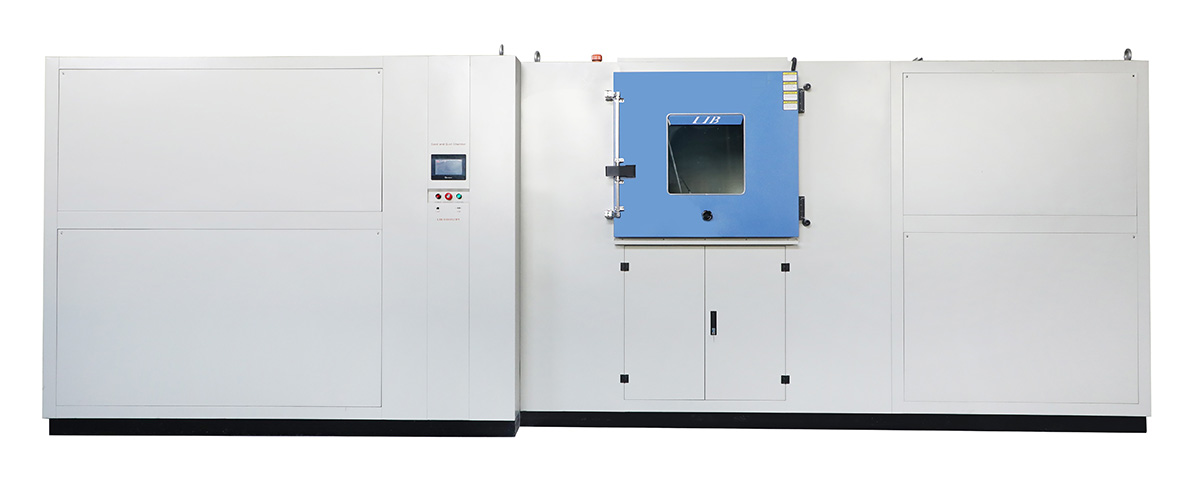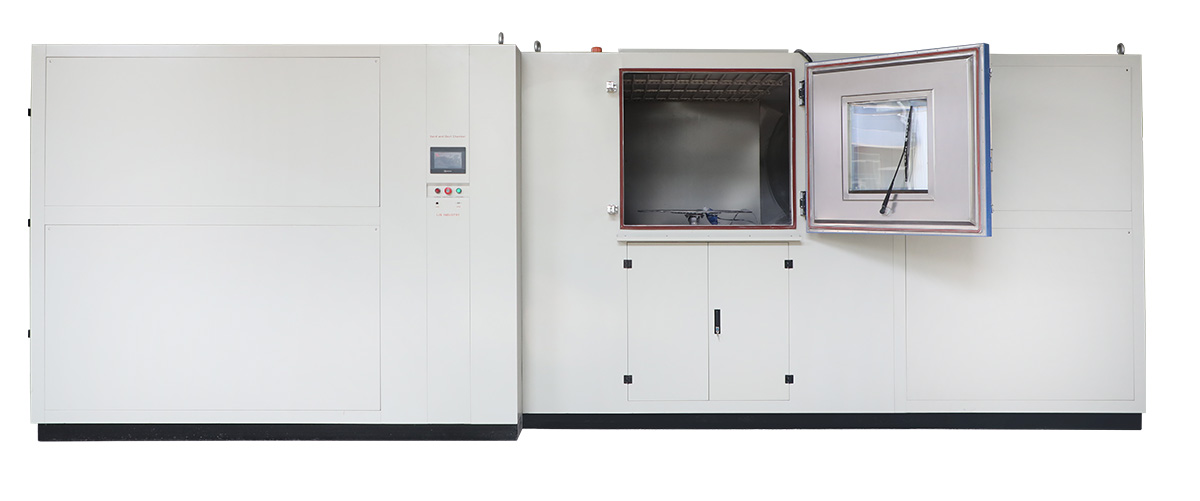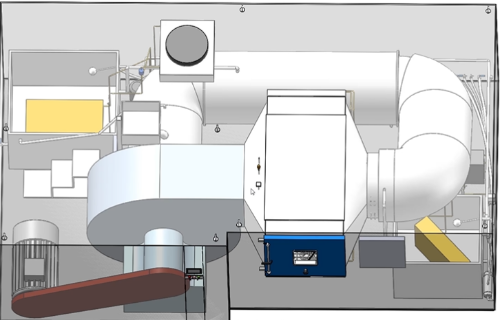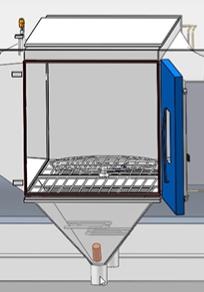The dusty and sandy environment not only causes great harm to people's daily production and life, but also causes great damage to the equipment, seriously affecting the service life and safety of the equipment.

Specifically, how does the dust environment affect equipment? Blowing dust test chamber can help to solve this problem.In this paper we specifically discuss the physical aspect, in general, the dust environment is generally accompanied by high wind speed strong winds, high-speed movement of dust can wear the moving parts of the product or fixed surface, but also through the cracks, cracks, bearings, seals and various electrical instruments combined parts, blocking openings and filtration devices, resulting in product damage, failure or poor contact, moving parts are stuck.
Under the influence of high wind speed, sand and dust can erode the surface of products and materials and destroy the protective layer on the surface of products or materials. In addition to the sand blown by the natural wind, the moment of taking off and landing of vehicles and helicopters will produce a dust environment, which will cause similar erosion.
In general, when dust is deposited in insulators, relays, or any contactors, and in a dry state, the deposited dust becomes a poor conductor. Due to the increase of contact resistance, dust will reduce the working performance of products and components. For low voltage, can cause the system to work abnormally; For high voltages, increasing the contact resistance can cause flaring or rapid damage to the contact surface.
The blowing dust test chamber is mainly used to test military equipment, weapon systems and so on. It simulates the harsh desert environment, test the wear resistance, sealing, protection and other properties of the product.

The MIL STD 810h standard involves the use of two materials and three procedures.
The first type of sand or dust is very fine, with a grain size mainly of 149 μm or less, similar to the dust during Desert Storm and the Desert, and the second material is usually 150-850 μm, close to fine sand.
Procedure 1: Usually 6 hours of blowing dust test, blowing dust at a speed of 1.5 to 10 meters per second;
Procedure 2: Sand blowing test at a speed of 18 meters per second for approximately 90 minutes;
Procedure 3: It is used to settle dust and sand to determine how long the product can sit in a dusty environment and settle down, the dust size is about 105 microns, which is usually a three days test.
All three test procedures are carried out at room temperature (about 25°C) and relative humidity of about 30%.
The blowing dust test chamber is equipped with a powerful fan, so that the pre-placed sand and dust that meets the specific particle size requirements of MIL-STD-810 is circulated inside the test blowing dust test chamber.
Sand and dust through the design of the air duct and regulating device, and control the speed and pressure of the air flow, so as to simulate various strength of the dust environment. The test piece is placed on a workroom turntable, fully exposed to circulating sand and dust.
During the whole test process, the surface condition of the sample and the change of various parameters in the test chamber can be observed at any time through the observation window with the dust scraper.
The test will be conducted in accordance with the length of time and the number of cycles specified by the U.S. military standard, and the final comprehensive assessment of the sample's resistance to sand and dust environment, including key indicators such as tightness, functionality and reliability.

The workroom of the blowing dust test chamber is made of SUS304 stainless steel, resistant to strong corrosion and high temperature. The corrosive effect of sand and dust on the material under strong wind speed and the heat generated by high-speed friction can be ignored in this chamber.
The sand and dust are blown into the working room from the left side by the fan, and then blown out from the right side of the workroom and into the pipeline, forming a sand and dust cycle. During the dust cycle, the friction between the dust and the inner wall of the pipe generated high heat, so we equipped three water tanks outside the pipe to cool the pipe, and copper pipes above the workroom to cool the pipe.

The fan inverter is set at the back of the workroom to change and control the wind speed in the working room by changing the fan speed, the dust inlet is set above the rear of the fan, and the motor is equipped to control the amount of sand and dust.As shown in the figure. The lower part of the workroom is equipped with a funnel with heat pipes and a vibration motor, both of which help to prevent the sand from clumping and shake off the dust attached to the inner walls of the workroom.

The blowing dust test chamber is verified according to the MIL-STD-810. With ordinary dustproof boxes, their test standards are different, and the execution basis is different, and the requirements are relatively strict. Whether it is from the reliability and performance of the equipment, research and development and production process, it can simulate a variety of harsh dust conditions in a controlled laboratory environment, weapons and equipment, vehicles, aircraft and electronic equipment, etc., comprehensive and rigorous testing. This helps identify potential design flaws and weaknesses in advance so that targeted improvements and optimizations can be made.
The above is the introduction ofblowing dust test chamber , if you want to know more information, click here to view the more details.
If you need professional help and solutions, please contact us inquiry@libtestchamber.com , professional team is online to provide you with tailor-made solutions.